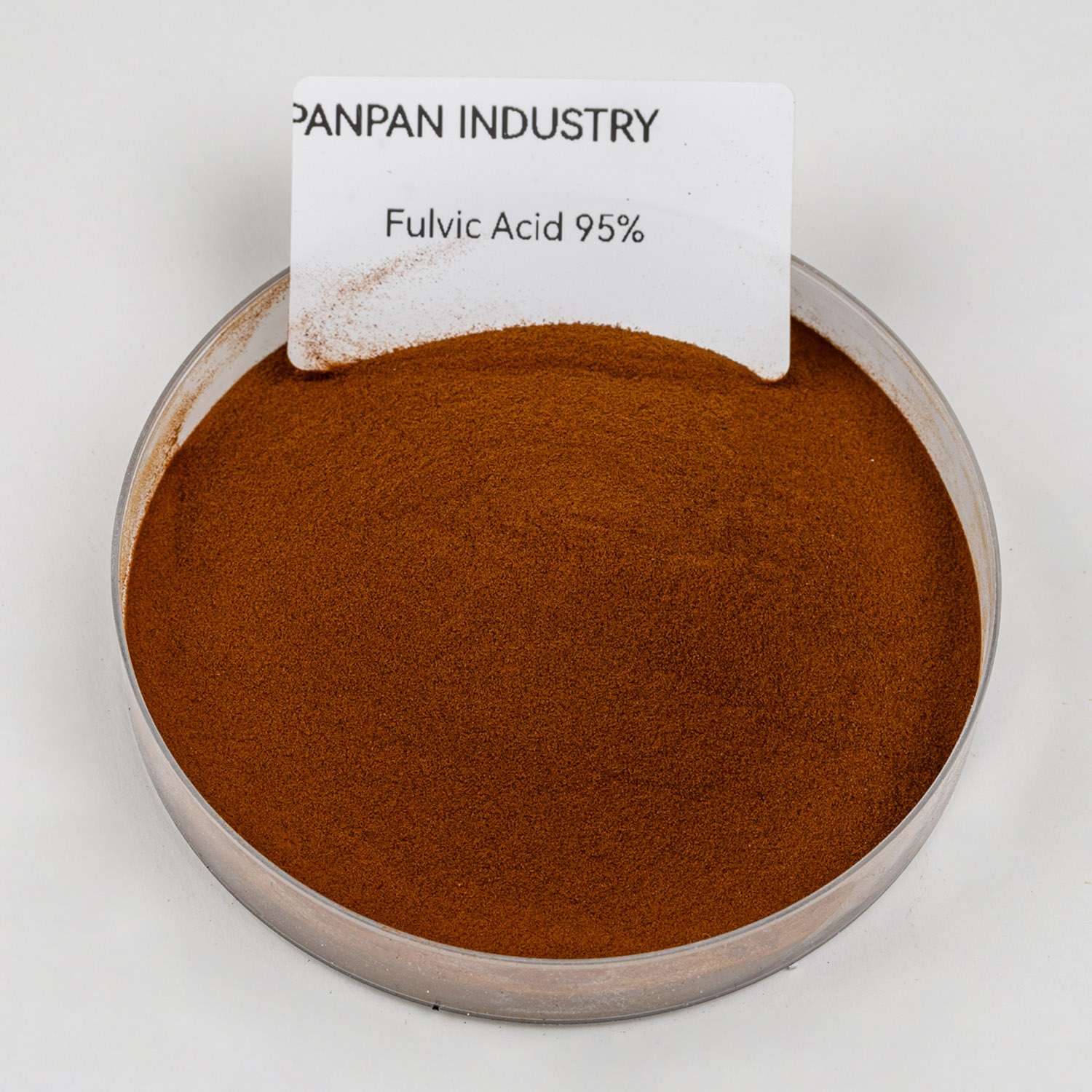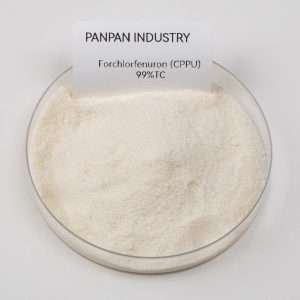Fulvic acid
Fulvic acid is a plant growth promoter and is usually classified as fertilizer or microfertilizer. It can be absorbed by plant roots, stems and leaves, can promote rooting, improve plant respiration, reduce leaf stomatal opening, reduce crop transpiration, and regulate the activity of certain enzymes, such as promoting catalase and inhibiting indoleacetic acid. oxidase, etc.
【1】Commodity name Fulvic acid, fulvic acid, No. 1 anti-drought agent, Zaodilong
【2】Physical and chemical properties
Fulvic acid is a kind of mixture of complex substances with similar but different structure. %), nitrogen (1%~6%), sulfur, etc., the main functional groups are carboxyl, hydroxyl, methoxy, carbonyl, etc., the relative density is 1.330~1.448, soluble in water, acid and alkali.
【3】Features
Fulvic acid is a plant growth promoter and is usually classified as fertilizer or microfertilizer. It can be absorbed by plant roots, stems and leaves, can promote rooting, improve plant respiration, reduce leaf stomatal opening, reduce crop transpiration, and regulate the activity of certain enzymes, such as promoting catalase and inhibiting indoleacetic acid. oxidase, etc.
【4】Application Technology
a. Break dormancy, improve germination rate, and improve drought resistance
Wheat
The seeds were soaked with 1.67% fulvic acid solution for 30 min, and the germination rate increased by about 4.87% after 24 hours compared with the control, which had the effect of improving the germination rate of wheat and promoting the growth of wheat seedlings.
Rape, millet, sesame, rice, corn, peanut
Soaking the seeds with 0.5% fulvic acid solution for 2 hours and drying them for sowing can improve the germination potential and germination rate of the seeds and improve the resistance of the seedlings.
Melon, watermelon, cucumber, sunflower
Soak the seeds with 0.5% fulvic acid solution for 10~-20 hours, and dry them for sowing, which can improve the germination potential and germination rate of the seeds and improve the resistance of the seedlings.
Alfalfa
Soaking the seeds with 0.05% fulvic acid solution for 10-20 h can improve the germination potential and germination rate of the seeds and improve the resistance of the seedlings.
b. Improve stress resistance and increase production
Wheat
Using 0.2% fulvic acid liquid to irrigate wheat in the field can significantly increase the chlorophyll content of wheat in the field at the seedling and greening stages, improve the growth quality of seedlings, and improve the ability of seedlings to resist stress.
Soybean
Spraying 0.16% fulvic acid liquid on the leaf surface at the early flowering stage of soybean can improve the stress resistance ability of soybean and promote the increase of yield.
Tomato
Spraying 0.04% fulvic acid liquid on the leaves of tomato seedling stage, early flowering stage and young fruit stage can significantly increase the yield. Strawberry was irrigated with 3 kg of fulvic acid per mu after tomato transplanting, which could increase the yield.
Potato
Irrigation of 0.05% fulvic acid on the continuous cropping potato field can reduce the decrease in the content of chlorophyll, proline and soluble sugar in leaves caused by continuous cropping, and increase the starch content, vitamin C content and soluble protein content of potato tubers, which is relatively improved. Superoxide disproportionation machine catalase activity, and reduce malondialdehyde content and reactive oxygen species level.
Cabbage, Fennel, Coriander and Dill
In the middle stage of growth, foliar application of 0.25%~0.34% fulvic acid liquid can significantly increase the yield.
Apple
Before being subjected to drought stress, root irrigation with 500 mg/L medicinal solution or foliar spraying with 1000 mg/L medicinal solution can play a good role in drought resistance.
Sugar cane
In the late growth stage of sugarcane, foliar spraying with 1000 mg/L fulvic acid liquid can significantly increase the yield and sugar content.
Peanut
Foliar spraying with 1000 mg/L liquid medicine at the seedling stage, first flowering stage and lower needle stage of peanut can improve the drought resistance of peanut and significantly increase the yield.
Corn
At the 7-leaf stage of maize, the number of grains per ear, 1000-grain weight and yield of maize showed an increasing trend when 133 mg/L of yellow fermented dumplings (potassium) bath was sprayed.
【5】Precautions
Fulvic acid is a broad-spectrum plant growth regulator, mainly used for drought resistance, disease prevention and yield increase. The dosage is flexible and generally has no side effects.
Related products
FAQ
We are based in Henan, China, start from 2021,sell to South America(31.00%),North America(25.00%),Western Europe(15.00%),Central America(8.00%),Oceania(5.00%),Eastern Asia(5.00%),Eastern Europe(4.00%),Southeast Asia(3.00%),South Asia(2.00%),Africa(00.00%),Mid East(00.00%). There are total about 5-10 people in our office.
Always a pre-production sample before mass production;
Always final Inspection before shipment;
Gibberellin GA3,Cytokinin,Rooting Hormone,Fruit Coloring,Plant Growth Inhibitor
1. Professional supplier of Gibberellic acid,IBA, 6-Benzylaminopurine, CPPU,abscisic acid and other plant growth regulators 2. 12 years exporting experience with customers all over the world 3. Product has been approved by SGS
Accepted Delivery Terms: FOB,CFR,CIF,EXW,FAS,CIP,FCA,CPT,DEQ,DDP,DDU,Express Delivery,DAF,DES;
Accepted Payment Currency:USD,EUR,JPY,CAD,AUD,HKD,GBP,CNY,CHF;
Accepted Payment Type: L/C,D/P D/A,MoneyGram,Credit Card,PayPal,Western Union,Cash,Escrow;
Language Spoken:English,Chinese,Spanish






